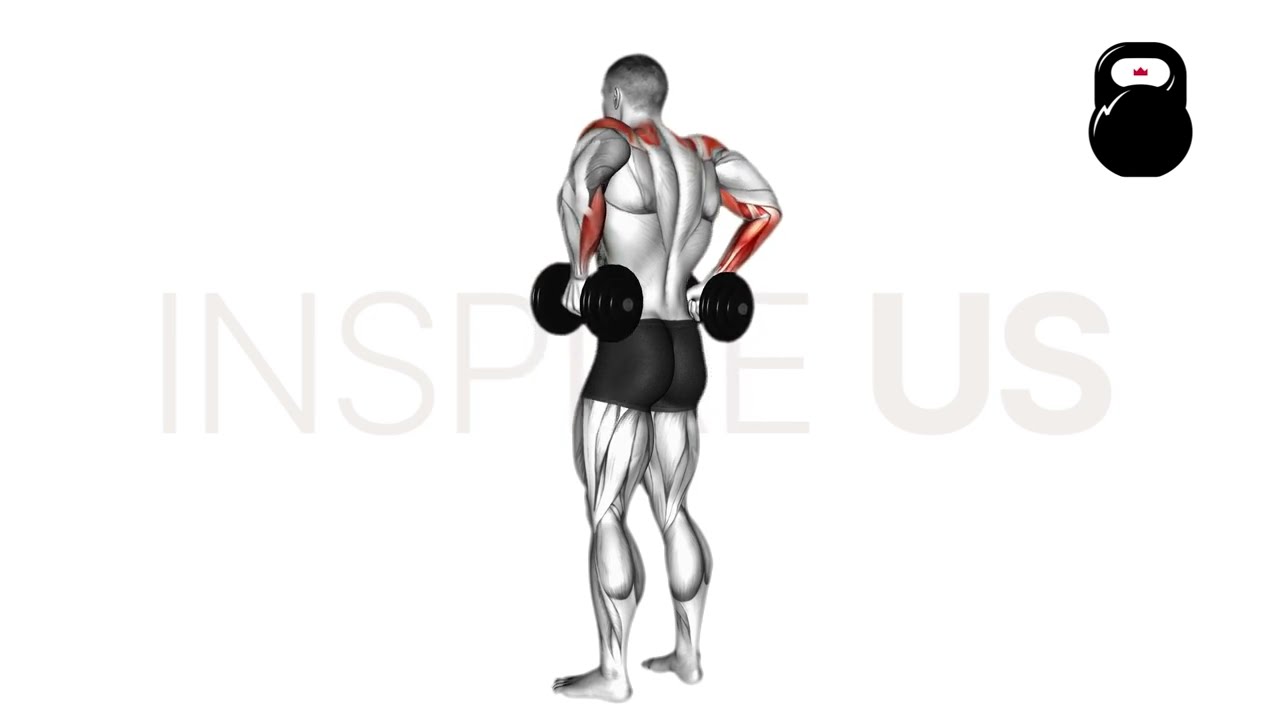Monkey Rows: Benefits, Muscles Worked, and More
Also known as the armpit row; monkey rows are an uncommon vertical pulling movement primarily done to work the shoulders, upper back muscles and the elbow flexors.
What are Monkey Rows?
Upon technical examination, we can determine that the monkey row is an open chain compound movement best serving in the role of a secondary compound movement for greater shoulder and back mass.
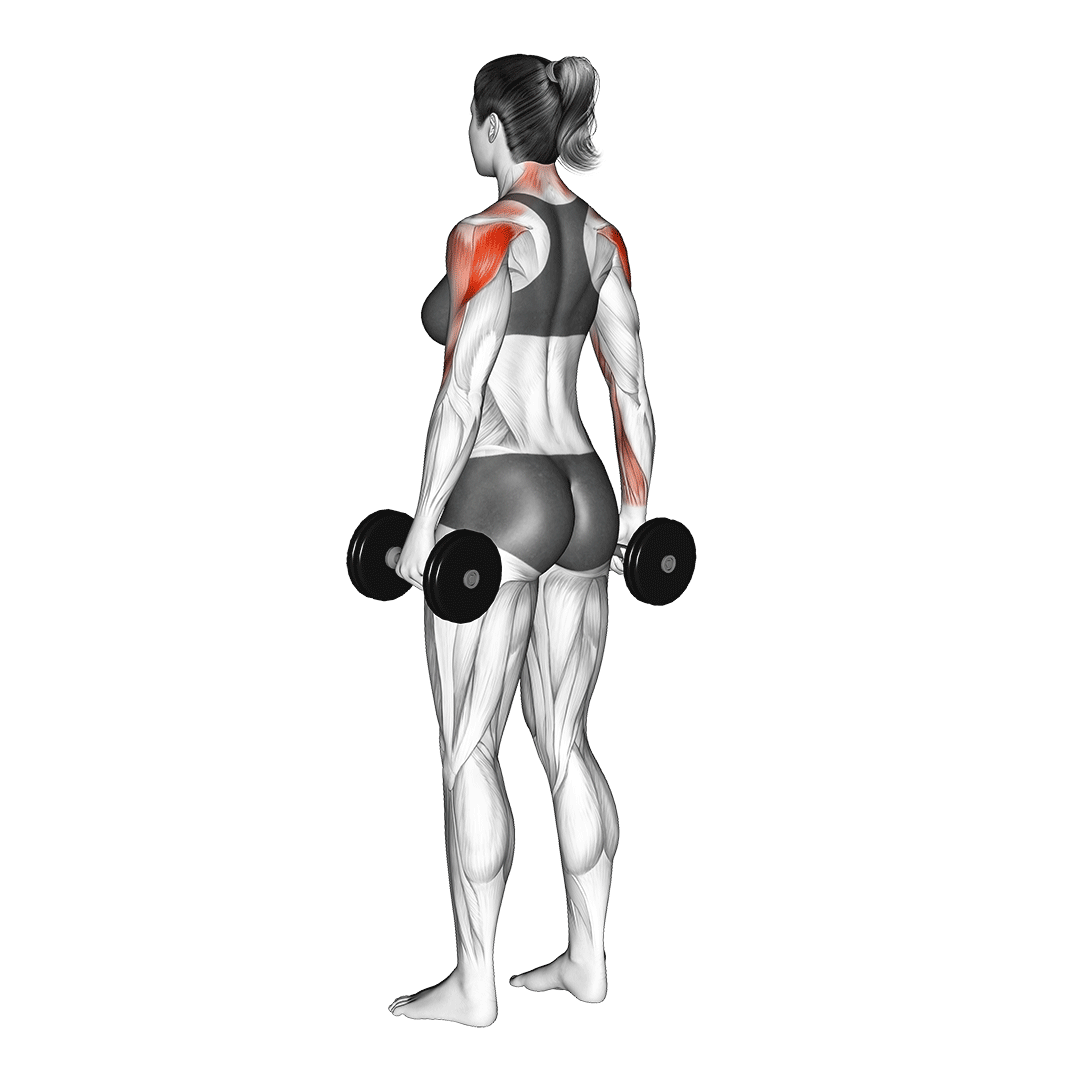
Some level of controversy follows the monkey row, as (like upright rows) there is a significant risk of shoulder impingement and similar shoulder-related injuries if the exercise is performed with incorrect technique.
Fortunately, with a proper mobility drill, a sufficient warm-up and attention paid to form, the inherent injury risk of monkey rows can be largely mitigated.
Monkey rows are occasionally also referred to as “armpit” rows, neutral grip upright rows or upright bent elbow shrugs. Rest assured, all of these names equate to the exact same exercise with much the same form and benefits.
Are Monkey Rows the Right Exercise for You?
Monkey rows require an already well-established level of shoulder mobility and familiarity with scapular movement.
As such, they are an exercise best reserved for lifters of at least an intermediate level, if not higher.
However - regardless of how long you’ve been lifting - if you have a history of injuries to the biceps, elbows, shoulders or shoulder blades, speak to a medical professional prior to attempting monkey rows.
How to do Monkey Rows Correctly
To perform a repetition of monkey rows, the lifter will begin by first holding a pair of moderate weight dumbbells at their sides in both hands, grip neutral, core braced and shoulder blades partially depressed.
From this starting position, the lifter then squeezes their deltoids and trapezius muscles, pulling the dumbbells immediately upwards as they flare their elbows out to the sides.
The apex of the movement will closely resemble the front lat spread pose of classic bodybuilding sport, only without the latissimus dorsi muscles actually being contracted.
With the elbows pointed directly out to the sides, the shoulders hunched upwards and the dumbbells close to the sides of the ribs, the lifter then slowly releases tension in their upper back. This should slowly lower the dumbbells back down along the sides of the body, straightening the arms.
Once the arms are fully slack at the sides of the body once more, the repetition is considered to be complete.
In order to avoid injury, remember to never raise the upper arms above a parallel plane to the shoulders and to lead with the trapezius and deltoids. Do not curl the weight with the biceps at the start of the repetition, as this can lead to elbow irritation.
Sets and Reps Recommendation:
Because of the moderate injury risk of monkey rows, a fine balance needs to be struck between training intensity, how much weight is lifted and individual set volume.
To err on the side of caution, aim for 2-3 sets of 10-14 repetitions at a moderate to light load.
What Muscles are Worked by Monkey Rows?
Monkey rows are a compound movement with an admittedly small scope.
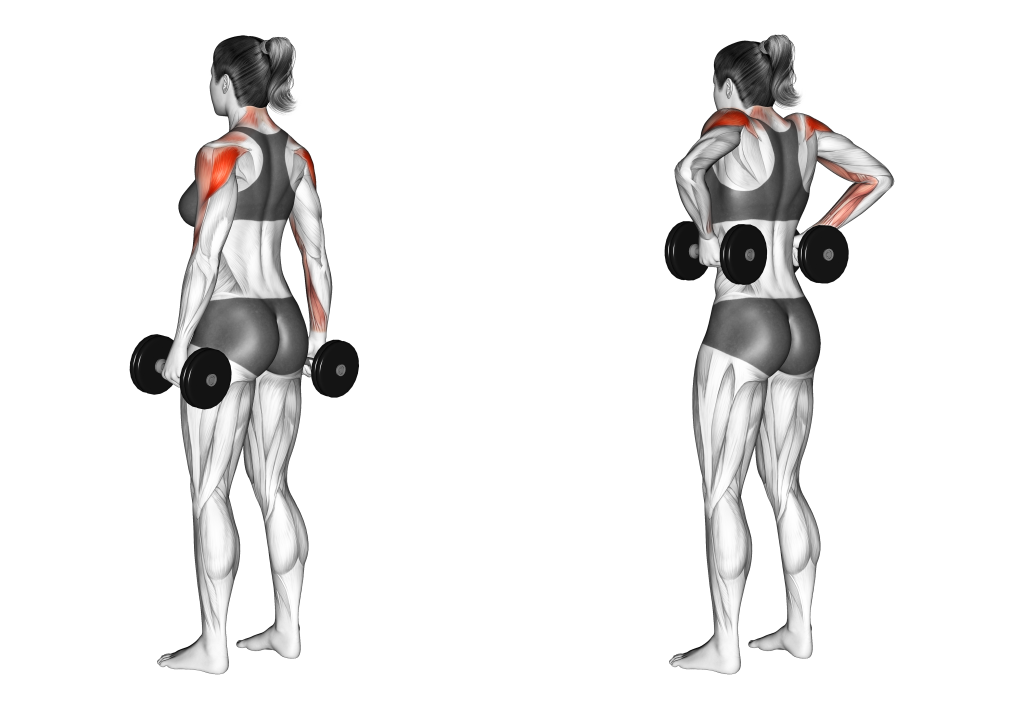
Essentially, this means that while they do indeed contract multiple muscles simultaneously, the overall number of such muscle groups is relatively small in comparison to other horizontal pulling exercises.
Regardless, these muscles are separated according to the manner in which they are contracted. So called “mover| muscles exhibit dynamic contraction, whereas “stabilizer” muscles primarily exhibit isometric contraction, thereby benefiting less from the movement.
Mover Muscles
In terms of primary mover muscles, monkey rows will work the medial deltoid head and upper trapezius to the greatest extent. The lateral upwards movement of the upper arms alongside shrugging of the shoulders and scapula demand such recruitment.
Secondary to these are the anterior deltoid head, which aids the upward draw of the arms by pulling the humerus towards the collarbone.
Stabilizer Muscles
Apart from the mover muscles, the posterior deltoid head, biceps brachii, lower trapezius and forearms all contract in a static manner to help stabilize the movement.
These muscles do not shorten or lengthen to any significant extent during the exercise, meaning less overall muscular hypertrophy is stimulated and the muscles subsequently develop to a comparatively lesser extent.
What are the Benefits of Doing Monkey Rows?
Despite the debate surrounding their safety, there is no doubt regarding the effectiveness and benefits of the monkey row. When performed correctly, monkey rows not only build the traps and deltoids, but can improve stability in the overall shoulder structure as well.
Excellent for Building Mass and Strength in the Traps and Shoulders
The main advantage to performing monkey rows is their capacity to target the vital but more often forgotten muscles of the upper trunk - those being the trapezius and medial deltoid heads.
These muscles are responsible for a wide variety of different biomechanical functions, but most notably rotation and lateral movement of the arms and general movement of the scapula.
Apart from their action, these muscles are also vitally important for the general appearance of muscularity and width in the upper torso. So much so, in fact, that many bodybuilders will specifically train these muscles so as to achieve the coveted “V-taper” shape in their sport.
To get the most out of monkey rows in this vein, ensure a slow eccentric contraction is present in each repetition and that you are properly contracting the traps at the apex of the movement.
Reinforces Stability in Shoulder Joint and Scapula
Although monkey rows have a poor reputation as far as shoulder joint health goes, the fact that they strengthen the deltoids and trapezius muscles means that (barring acute injury) the shoulder joint and scapula structures will subsequently be reinforced as well.
Greater stability in these areas can reduce future risk of injury, improve posture and develop athletic performance.
Of course, if you suffer from issues of the shoulders or shoulder blades, consult with your physical therapist prior to attempting monkey rows.
Carryover to Other Vertical Pulling Movements
While minimal due to its unique movement pattern, monkey rows can provide some small level of carryover to other vertical pulling exercises.
In particular are upright rows, deadlifts and close grip lat pulldowns - all of which either heavily involve the same muscles as monkey rows or partially replicate its movement pattern in some way.
For lifters with difficulty stabilizing their upper trunk during neutral grip pull-ups or close grip pulldowns, monkey rows can act as the perfect accessory movement to pair in the same workout.
Unique Movement Pattern
It goes without saying that the monkey row is a rather unusual exercise, with few exercises replicating its movement pattern.
Though this is for good reason (shoulder health), training with normally undertrained angles of resistance or movements can help correct issues relating to poor directional force output, stability and sticking points.
Even outside of a technical perspective, training the same movement every single session can quickly become repetitive and boring. Lifters bored of upright rows or face pulls may wish to try monkey rows as an occasional substitute, provided they keep their technique as solid as possible.
Comparatively More Wrist and Spine Friendly Than Other Deltoid/Traps Exercises
Lifters with a history of wrist, forearm or back issues may find other deltoid and trapezius exercises to be irritating to these areas - if not potentially dangerous. Movements like chin-ups, overhead presses, shrugs or rows can all irritate the back and wrists in those susceptible.
Fortunately, monkey rows are comparatively far more forgiving on these parts of the body, especially in regards to the lower back and the tissues of the wrist flexors.
As such, monkey rows can act as a temporary substitute to those aforementioned exercises as the lifter works on recovering full physical health. As always, speak to a medical professional prior to attempting to exercise with an injury.
Common Monkey Row Mistakes to Avoid
In order to maximize the safety and effectiveness of your monkey rows, look out for the following commonly seen mistakes.
Raising Upper Arms Too High
The main mistake to avoid when performing monkey rows is a poor humeral angle within the shoulder socket. From the outside, this will appear as if the upper arms are raised higher than the shoulder, often with the elbows parallel to the scalp or ears.
Raising the upper arms too high can increase friction between the various tendons within the shoulder joint, causing it to catch and grow irritated if performed repetitively. Over time, this can lead to tendonitis, impingement or even tears.
At their highest, the upper arms should only be parallel to the shoulders. The elbows may be raised higher, but the upper arms themselves should stay parallel or below the shoulders themselves.
Excessive Momentum or Poor Range of Motion
Performing any exercise with the incorrect momentum or an insufficient range of motion can lead to injuries, poor muscular development and the development of issues like sticking points or muscular imbalances.
These effects are further compounded by the comparatively more delicate nature of monkey rows, where excessive momentum will greatly multiply the irritation and impact placed on the shoulder joints.
Furthermore, performing monkey rows with an excessively short ROM will essentially turn the exercise into an isolation exercise, as only the biceps or deltoids will be recruited.
Aim to start and end each repetition with the arms loose at the sides of the torso, whereas the highest point of the rep should have the shoulders shrugged and the elbows pointing straight out to the sides.
Twisting the Wrists
Monkey rows are performed with a neutral wrist orientation so as to reduce strain on the entire arm and shoulder structure.
Twisting the wrists by accident or due to lifting excessive weight can potentially lead to injuries of the forearms, elbows or the wrists themselves.
Keep the palms facing inwards with the wrists aligned with the rest of the palm. The forearms themselves should not dynamically contract whatsoever, and the knuckles should remain pointing downwards throughout the set.
Internally Rotating the Shoulders
Like raising the upper arms too high, rotating the shoulders towards the midline of the body can also increase strain and irritation within the shoulder joint itself.
If repeated over multiple training sessions, this sort of strain can easily lead to impingement, tendonitis and other types of overuse injuries.
Throughout each monkey row repetition, the lifter should strive to keep their shoulders either neutral or slightly externally rotated - preferably the latter, if mobility allows. Doing so helps protect the shoulders and better engage the upper trapezius muscles at the apex of the movement.
Hunching Forwards, Protracting Scapula or Curving Upper Spine
If attempting to lift too much weight, fatigued or otherwise yet to make spinal neutrality a lifting habit, performers will often do monkey rows with their upper back or scapula hunched forwards.
Although less likely to result in shoulder issues, this type of common mistake will lead to less effective trapezius contraction, a shorter range of motion and potentially strain the back in more severe cases.
During a monkey row repetition, the chest should be pushed somewhat out, the scapula partially retracted and the neck aligned with the rest of the cervical spine.
A good cue to help maintain this stance is to imagine balancing a flat object atop the head as you row the dumbbells. If done correctly, the head and neck will be aligned over the shoulders and the chest prominent when viewed from the side.
Alternative Exercises to the Monkey Row
If you’ve been advised to avoid monkey rows or simply want a more focused upper trunk exercise, try the following alternatives out.
Cable Upright Rows
Cable upright rows are a variation of upright rows that feature a more forward arm position and an overhand grip.
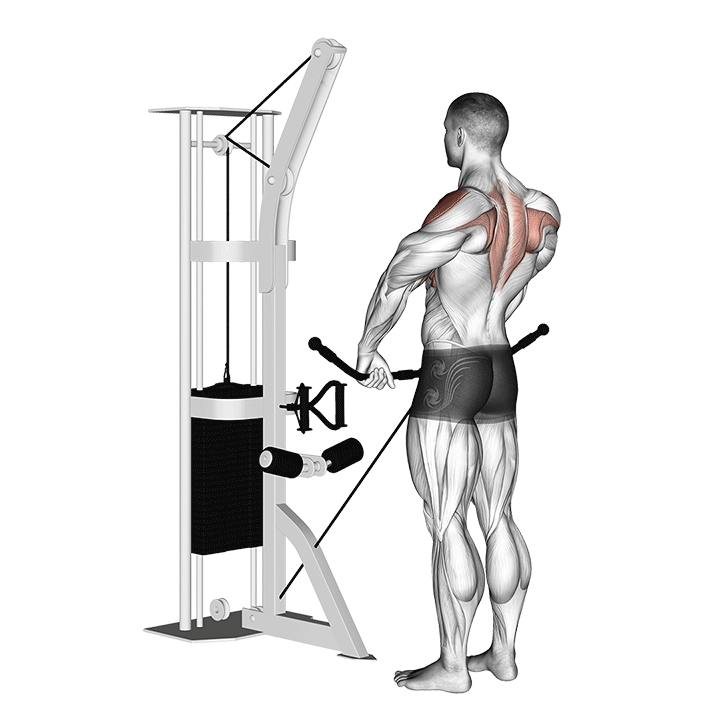
In comparison to monkey rows, the cable upright row works the anterior deltoid head to a greater degree, as will further allow for greater adjustability and safety in certain respects.
Use cable upright rows as a substitute to monkey rows in situations where free weights are unsuitable, or when a more lateral upper arm position is counter to your training goals.
Smith Machine Shrugs
For even greater emphasis on the trapezius muscles, performing barbell shrugs with the use of a smith machine is one excellent option to take.
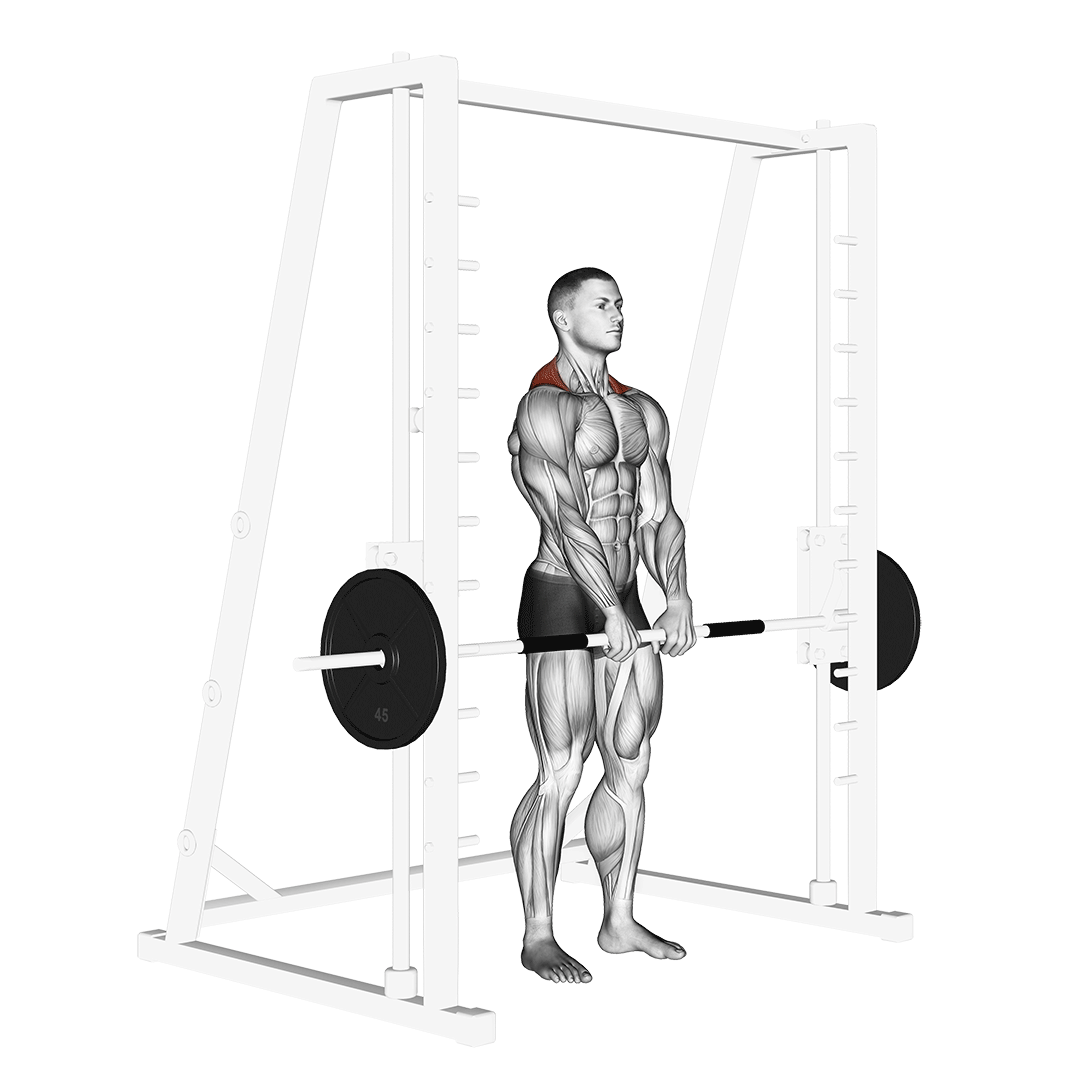
Unlike monkey rows, smith machine shrugs will not necessarily work the deltoids to a significant extent, but will instead more than make up for it with greater trapezius activation.
If you have monkey rows in your program solely for their trapezius benefits, consider reducing overall fatigue and injury risk by switching to a more focused movement like the smith machine shrug.
Plate Front Raises
Plate front raises are a free weight compound movement targeting the anterior and medial deltoid heads in a movement pattern quite similar to monkey or upright rows.
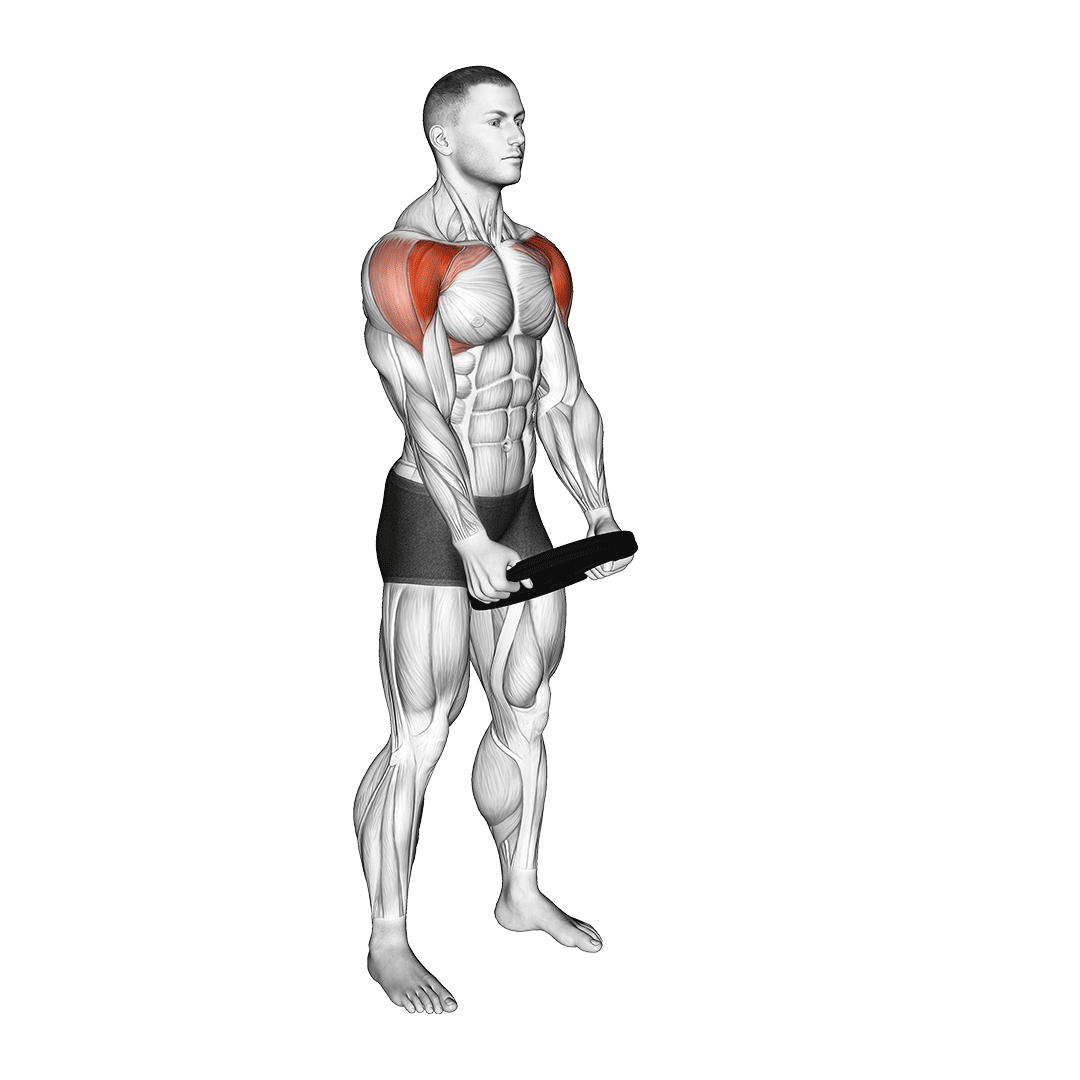
However, rather than including a shrug at the height of the movement, the lifter will instead stop with their arms extended straight ahead of their shoulders, eliminating the trapezius from the movement in favor of the deltoids.
Like smith machine shrugs, plate front raises are best used as a monkey row substitute if their presence in your program is solely for targeting the deltoids. Not only are front raises safer, but they will also allow for greater volume and range of motion as well.
Frequently Asked Questions (FAQ)
Are Monkey Rows Safe?
Yes - so long as they are performed with a reasonable amount of weight and proper technique. Keep the shoulders neutral, the upper arms parallel to the shoulders at most and avoid pulling with the biceps at the start of the repetition.
Are Gorilla Rows and Monkey Rows the Same?
Despite the simian similarity of their names, gorilla rows and monkey rows are in fact drastically different exercises with widely distinct purposes.
Monkey rows are a relatively focused deltoid and trapezius exercise involving a vertical pull while in a standing position. In comparison, gorilla rows are a bent-over horizontal pull meant to target the latissimus dorsi, rhomboids and other mid-back muscles.
Are Monkey Rows Better than Upright Rows?
In certain aspects, yes.
Monkey rows feature a neutral grip and a more advantageous angle for the ball and socket shoulder joint itself. In turn, this reduces the risk of injury and overall irritation towards the shoulders.
References
1. Kolber, Morey J et al. “Characteristics of shoulder impingement in the recreational weight-training population.” Journal of strength and conditioning research vol. 28,4 (2014): 1081-9. doi:10.1519/JSC.0000000000000250
2. Heffernan, Conor. (2018) “Forgotten Exercises: Monkey Rows” Physical Culture Study. Retrieved From: https://physicalculturestudy.com/2018/08/08/forgotten-exercises-monkey-rows/ on (10/11/2023)

